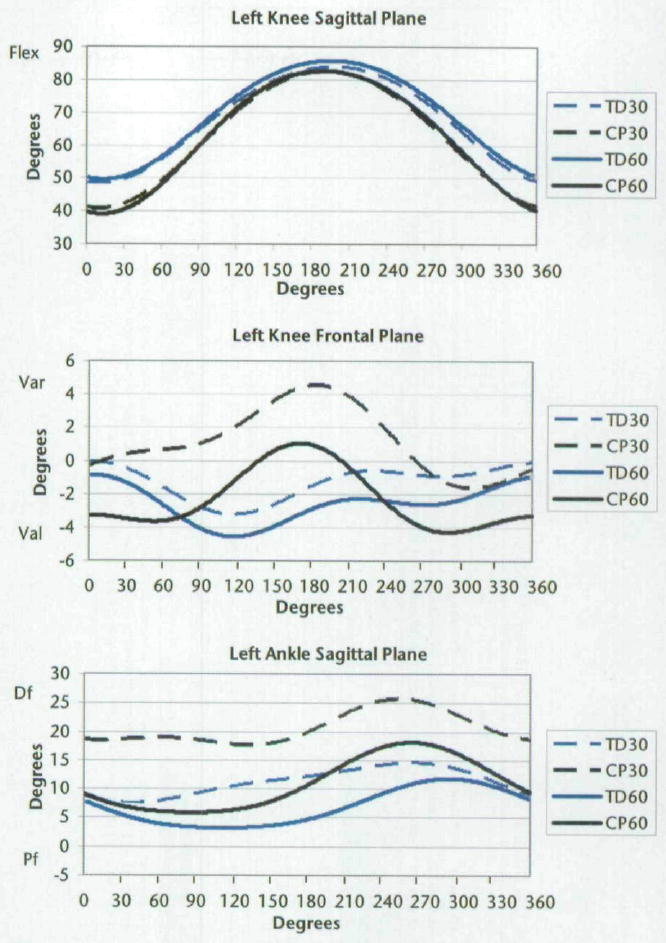Figure 4.

Joint kinematics of the left knee and ankle for all subjects. Zero degrees is the point at which the left crank arm was horizontal and farthest from the subject, as shown in Figure 2. Qualitative differences are evident, demonstrating the differences in magnitude and timing between groups and cadences. The positive direction indicates flexion (dorsiflexion) and varus for sagittal and frontal planes, respectively. Flex=flexion, Var=varus, Val=valgus, Df=dorsiflexion, Pf=plantar flexion. TD30=subjects with TD at cadence of 30 rpm, CP30=subjects with CP at cadence of 30 rpm, TD60=subjects with TD at cadence of 60 rpm, CP60=subjects with CP at cadence of 60 rpm.
